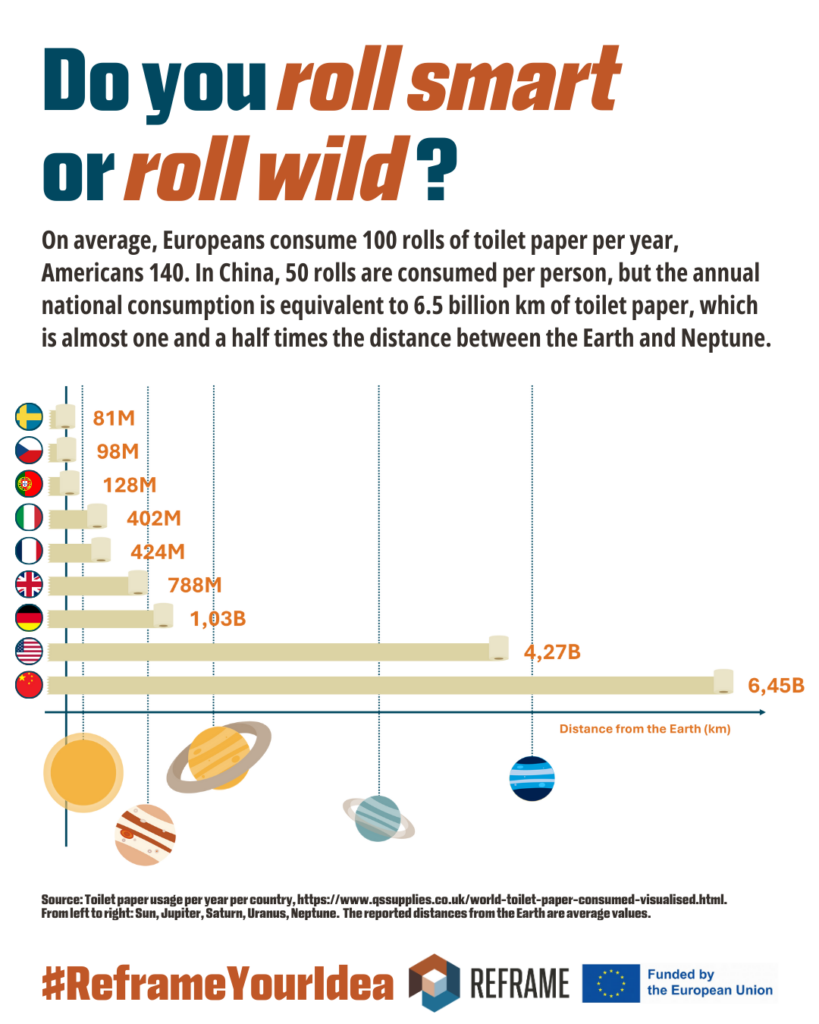🧻 Do you roll smart or roll wild?
 📉 THE PROBLEM
📉 THE PROBLEM
Did you know that the average European uses about 100 toilet paper rolls annually? Americans use even more: 140 rolls per person. In China, 50 rolls are used per person, but their total consumption stretches over 6.5 billion km, which, from a NASA perspective, means that the length of this ‘unrolled toilet paper’ is almost one and a half times the distance between the Earth and Neptune 🚀
While toilet paper is a convenience, remember that water is a more effective and sustainable option for hygiene 🌊🌱
⚠️ THE IMPACT
Toilet paper doesn’t just disappear:
· 🌍 Environmental costs: A recent life-cycle assessment (LCA) shows that advanced recovery technologies can reduce energy use by 8.57% and cut greenhouse gas emissions by 9.46% during treatment processes. (Source: Environmental Science and Pollution Research, 2023).
🎯 THE SOLUTION
By adopting innovative technologies, such as fine sieving systems, we can:
By bringing together several innovative technologies, Reframe aims to reduce the impact of treatment processes by exploiting cellulosic wastewater and bacterial metabolism to produce bio-based compounds such as platform chemicals, biopolymers and feed ingredients.
📊 TAKE-HOME MESSAGE
· 35-40% of suspended solids in wastewater are cellulose fibers from toilet paper.
· Sieving systems save 8.6 % more energy compared to traditional treatment by reducing the load on secondary processes! This means a large amount of money saved!
· Recovered fibers can serve as raw materials, replacing non-renewable resources.
